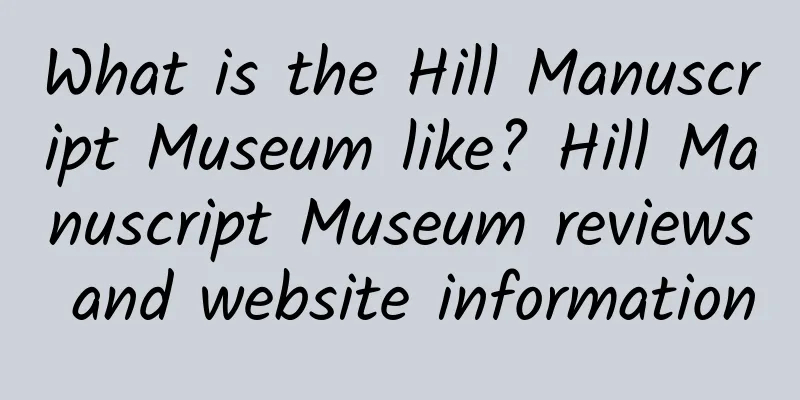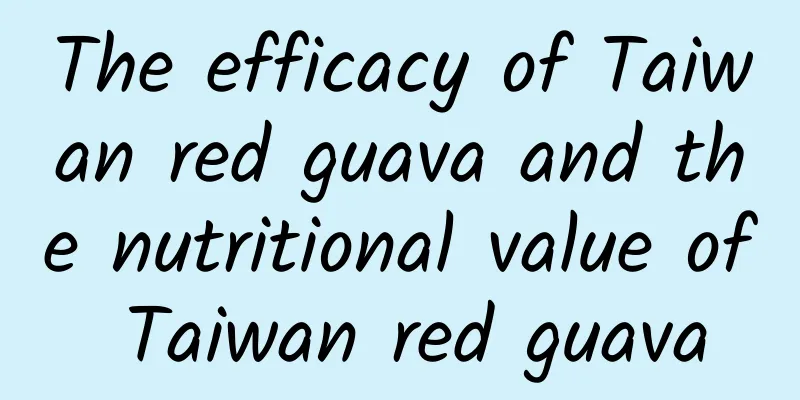What is the Hill Manuscript Museum like? Hill Manuscript Museum reviews and website information

|
What is the Hill Manuscript Museum website? The Hill Museum & Manuscript Library (HMML) is the world's largest museum of manuscript images. It was established in 1965 and is located in Collerville, Minnesota. The Hill Manuscript Museum provides manuscript books to users around the world through an online catalog. Website: www.hmml.org Hill Manuscript Museum: A digital palace protecting world cultural heritageIn today's digital age, the protection and dissemination of cultural heritage is unfolding at an unprecedented speed and breadth. In this wave of cultural heritage, a virtual "museum" stands out for its outstanding contribution - the Hill Museum & Manuscript Library (HMML). As the world's largest manuscript image museum, it is not only a place to preserve the crystallization of human wisdom, but also a bridge connecting the past and the future. Since its establishment in 1965, the Hill Manuscript Museum has been committed to collecting, preserving and sharing precious manuscript resources from around the world. From ancient religious documents to rare historical records, these manuscripts are not only important materials for academic research, but also the common cultural heritage of all mankind. Through advanced digital technology, HMML transforms these precious documents into high-resolution images and opens them to users around the world through online catalogs, allowing everyone interested in history and culture to easily access these treasures. Origin and Development: A Cultural Mission Spanning Half a CenturyThe story of the Hill Manuscript Museum can be traced back to the middle of the last century. At that time, the Cold War cloud loomed over the world, many countries and regions were in political turmoil, and a large number of precious historical documents were at risk of being destroyed or lost. In response to this crisis, St. John's University in Minnesota, USA, founded the Hill Manuscript Museum in 1965. Its original intention was to leave a complete cultural memory for future generations by photographing and preserving those endangered manuscripts. The initial projects focused on Europe and the Middle East, especially the religious documents preserved by the Catholic Church and its related institutions. Over time, HMML's vision has gradually expanded to more regions such as Africa, Asia and Latin America, covering precious manuscripts of different religions, languages and cultures. Today, the museum has accumulated more than 140,000 digitized images of manuscripts, becoming an important platform for global scholars, researchers and the general public to obtain first-hand information. Core function: a cultural treasure in the digital ageThe core function of the Hill Manuscript Museum lies in its powerful digitization capabilities. By scanning the original manuscripts with high precision, HMML ensures that each document can be presented to the user in the most authentic state. This digitization process is not just a simple copy, but also includes complex proofreading, sorting and cataloging work, so that each manuscript has a clear index and easy retrieval function. In addition, HMML has developed a complete online system that allows users to access these valuable documents anytime and anywhere through the website (www.hmml.org). Whether professional scholars or ordinary enthusiasts, they can quickly find what they need by simply entering keywords. More importantly, these resources are completely free for everyone to use, reflecting HMML's firm commitment to knowledge sharing and cultural dissemination. Collection highlights: A cultural corridor that travels through time and spaceEntering the Hill Manuscript Museum’s digital collection is like entering a time tunnel, allowing you to glimpse the development trajectory of different civilizations. Here are some of the most representative collection highlights:
In addition to the above categories, HMML also has rich multilingual literature, such as Greek, Hebrew, Slavic languages, etc., which fully reflects the integration and interaction of global multicultural cultures. Education and research: the engine driving academic progressAs an institution dedicated to the preservation and dissemination of manuscripts, the Hill Manuscript Museum is not only satisfied with the simple accumulation of materials, but also actively engaged in education and research. By holding various seminars, lectures and training courses, HMML has helped to cultivate batches of professional talents and promoted interdisciplinary cooperation and exchanges. For example, every summer, HMML invites scholars from all over the world to participate in its "Manuscript Research Summer School". Participants can not only learn in-depth knowledge about manuscript identification, restoration and digitization, but also establish connections with other peers and discuss future development directions. In addition, HMML also supports multiple long-term research projects involving linguistics, history, religion and other fields, providing valuable resources and support for the academic community. Technological innovation: leading the new trend of digital transformationAs information technology develops rapidly today, the Hill Manuscript Museum has always been at the forefront of technological innovation. In recent years, HMML has continuously introduced emerging technologies such as artificial intelligence and machine learning to improve the efficiency of manuscript recognition, classification and retrieval. For example, by analyzing the font features in the manuscript through AI algorithms, its age and geographical origin can be automatically determined; and semantic search based on big data allows users to locate the required information more accurately. At the same time, HMML is also actively exploring the application potential of virtual reality (VR) and augmented reality (AR). Through these technical means, users can "visit" archives thousands of miles away from home, and even "read" those long-forgotten manuscripts in person, gaining an immersive experience. Challenges and opportunities: cultural guardians facing the futureDespite its many achievements, the Hill Manuscript Museum still faces many challenges. The first is how to cope with the growing amount of data. With the launch of new projects and the increase of partners, HMML needs to continuously improve storage capacity and computing performance to ensure the security and accessibility of all materials. Secondly, in the context of globalization, how to balance the needs of different cultures and languages is also an important issue. Finally, fund raising and technology updates are also issues that cannot be ignored. However, in the face of these difficulties, HMML has always remained optimistic and firmly believed that all obstacles can be overcome through continuous innovation and multi-party collaboration. Looking ahead, HMML plans to further expand its coverage, include more precious documents that have not yet been digitized in the database, and strengthen cooperation with other international organizations to jointly build a more open and inclusive cultural ecosystem. Conclusion: Cultural inheritance that everyone can participate inThe existence of the Hill Manuscript Museum makes us realize that even in modern cities, we can touch the voices of the distant past through the Internet. It is not only a treasure house for storing knowledge, but also a space for stimulating thinking. Whether you want to understand the historical background of a specific period or simply appreciate the beauty of ancient calligraphy, there are countless things worth exploring here. More importantly, HMML reminds us that cultural heritage is not a distant concept, but a common wealth that belongs to everyone. As long as you are willing to take the first step, anyone can participate in the great cause of global cultural heritage through this platform. So, please don't hesitate to visit www.hmml.org immediately and start your cultural journey! |
<<: What is Virgin Rail like? Virgin Rail Reviews and Website Information
>>: How is Omsk State University? Omsk State University reviews and website information
Recommend
How is Innisfree? Innisfree reviews and website information
What is Innisfree? Innisfree is the earliest natur...
Ingredients and steps for stir-fried zucchini and pork slices
There are many ways to cook zucchini , and they a...
How to make vermicelli with meat? Steps of making vermicelli with meat
There are many ways to cook rice noodle soup with...
The benefits of concentrated roxburgh juice
Seabuckthorn is a natural wild fruit that grows m...
What should women eat to maintain their health in autumn? Women's autumn health recipes
Autumn is the best time for women to take supplem...
Xiebai Congee
I believe many friends are very clear about the k...
The role of pomegranates, how to eat pomegranates for health
Pomegranate is a very good fruit with many nutrie...
The nutritional value and efficacy of guava The medicinal value of guava
Guava, also known as guava, is a common fruit in ...
How to peel asparagus How to prepare asparagus
Asparagus is a green vegetable that many people l...
What are the benefits of eating okra?
In many people's eyes, okra is just a kind of...
What is the Cyprus government like? Cyprus government reviews and website information
What is the Cyprus government website? This websit...
What is Jo Malone like? Jo Malone reviews and website information
What is Jo Malone? Jo Malone is a high-end British...
What is the value of watermelon? What is the value of watermelon?
Watermelon is a very good fruit, so what is the v...
The efficacy and function of purple sweet potato bird's nest
Purple sweet potato and bird's nest are both ...
What is the University of California, Irvine like? University of California, Irvine reviews and website information
What is the website of University of California, I...









